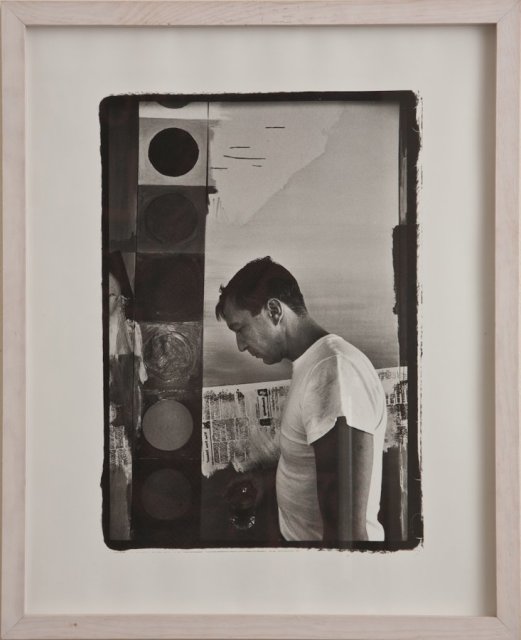Hopper had several artistic pursuits beyond film. He was a prolific photographer, painter, and sculptor.
Hopper's fascination with art began with painting lessons at the Nelson-Atkins Museum while still a child in Kansas City, Missouri. Early in his career, he painted and wrote poetry, though many of his works were destroyed in a 1961 fire that burned scores of homes, including his, on Stone Canyon Road in Bel Air. His painting style ranges fromabstract impressionism to photorealism and often includes references to his cinematic work and to other artists.
Ostracized by the Hollywood film studios due to his reputation for being a "difficult" actor, Hopper eventually turned tophotography in the 1960s with a Nikon camera bought for him by his first wife, Brooke Hayward. During this period he created the cover art for the Ike & Tina Turner single River Deep - Mountain High (released in 1966). He would become a prolific photographer, and noted writer Terry Southern profiled Hopper in Better Homes and Gardens magazine as an up-and-coming photographer "to watch" in the mid-1960s. Hopper's early photography is known for portraits from the 1960s, and he began shooting portraits for Vogue and other magazines. His photographs of Martin Luther King, Jr.'s 1963 March on Washington and 1965 civil-rights march in Selma, Alabama, were published. His intimate and unguarded images of celebrities like Andy Warhol and Jane Fonda were the subject of gallery shows and were collected in a book, "1712 North Crescent Heights." The book, whose title was his address in the Hollywood Hills in the 1960s, was edited by Marin Hopper. In 1960-67, before the making of Easy Rider, Hopper shot a selection of groundbreaking images that is seen as telling a remarkable history of art, artist, places and events of that time. Dennis Hopper: Photographs 1961-1967 was published in February, 2011, by Taschen.
Hopper began working as a painter and a poet as well as a collector of art in the 1960s as well, particularly Pop Art. Over his lifetime he amassed a formidable array of 20th- and 21st-century art, including many of Julian Schnabel's works (such as a shattered-plate portrait of Hopper); numerous works from his early cohorts, such as Ed Ruscha, Edward Kienholz, Roy Lichtenstein (Sinking Sun, 1964), and Warhol (Double Mona Lisa, 1963); and pieces by contemporary artists such as Damien Hirst and Robin Rhode. He was involved in L.A.'s Virginia Dwan and Ferus galleries of the 1960s, and he was a longtime friend and supporter to New York dealer Tony Shafrazi. One of the first art works Hopper owned was an early print of Andy Warhol's Campbell's Soup Cans bought for $75. Hopper also once owned Andy Warhol's Mao which he shot one evening in a fit of paranoia, the 2 bullet holes possibly adding to the print's value. The print sold at Christie's, New York, for $302,500 in January 2011. The proceeds of the two-day sale of some 300 pieces from Hopper's collection at Christie's went to his four children.
During his lifetime, Hopper's own work as well as his collection was shown in monographic and group exhibitions around the world including the Corcoran Gallery of Art, Washington D.C.; Walker Art Center, Minneapolis, Minnesota; the Stedelijk Museum, Amsterdam; the State Hermitage Museum, St. Petersburg; MAK Vienna: Austrian Museum of Applied Arts/Contemporary Art, Vienna; the Whitney Museum of American Art, New York; and the Cinémathèque Française, Paris, and the Australian Centre for the Moving Image, Melbourne.
